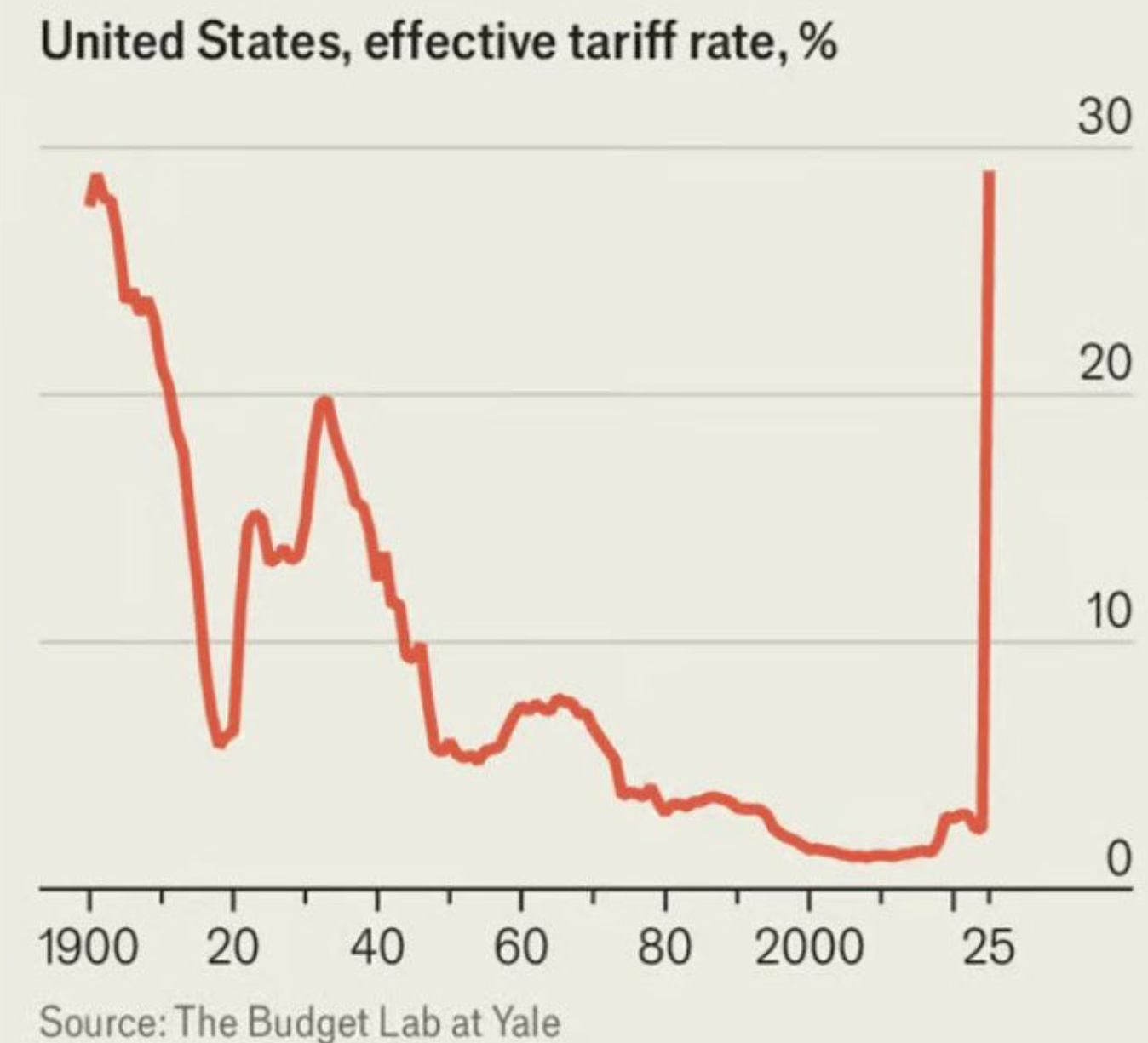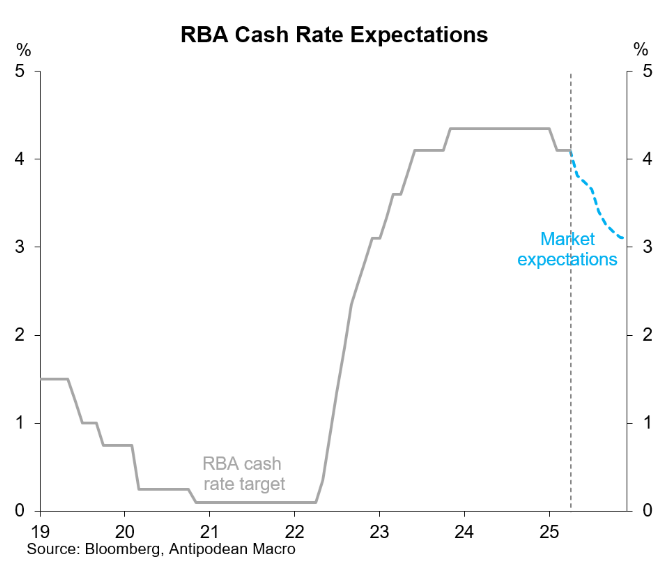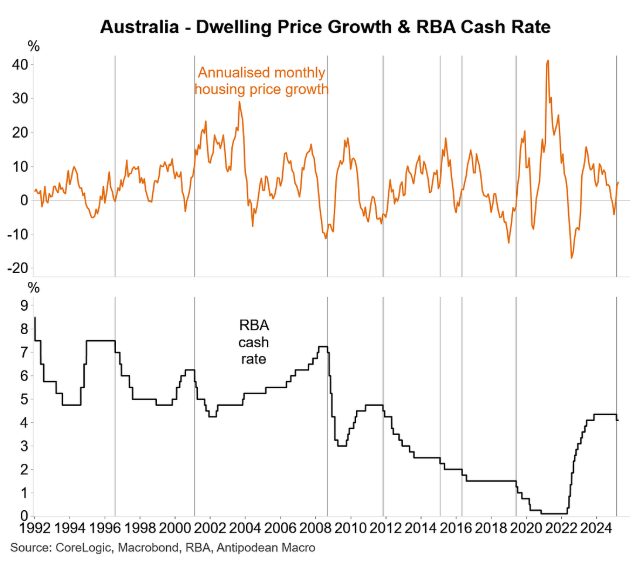On Thursday, Australian time, the Trump Administration announced its “Liberation Day” retaliatory tariffs, which impose tariffs of between 10% and 48% on trading partners.
This will see the US’ effective tariff rate rise to its highest level in more than a century.

The announcement of the tariffs led to heavy falls on global stock markets. In Australia, the ASX 200 fell 0.9% on Thursday and more than 1% on Friday.
The direct impacts of the US tariffs in Australia will be small. Only around 4% of Australia’s exports are to the US, so a 10% tariff won’t hurt too much.
The indirect impacts are the bigger concern, with the chances of a global recession increasing.
Australia exports nearly six times as much to China as it does to the US.
Australia’s top three export markets – China, Japan, and Korea – are facing new tariffs ranging from 24% to 34%.

Source: DFAT
If the US tariffs slow growth in these nations, they will likely buy fewer goods from Australia—e.g., iron ore, coal, and energy.
AMP chief economist Shane Oliver raised the probability of the US experiencing a recession to 40%. Oliver also believes that global growth could be pushed towards 2% from around 3% currently.
However, the ultimate impact on growth will depend on how other countries retaliate.
One thing is for certain: uncertainty has increased, confidence has been hit, and global activity will be softer than otherwise.
One of the side effects of the Trump Administration’s tariffs is that they have increased the likelihood of deeper interest rate cuts from the Reserve Bank of Australia (RBA), via two channels:
- Slower global growth and the risks of a global recession.
- Australia is more likely to be dumped with cheaper Chinese goods, which should lower imported inflation.
As illustrated below by Justin Fabo from Antipodean Macro, market pricing has moved swiftly to expect at least 100bps of RBA cash rate cuts by December.

Fabo also shows how “since the early 1990s, housing price growth in Australia has quickened, or the rate of decline slowed, every time the RBA has embarked on policy easing”.

The upshot is that the Trump Administration’s tariffs could trigger an Australian house price boom.

